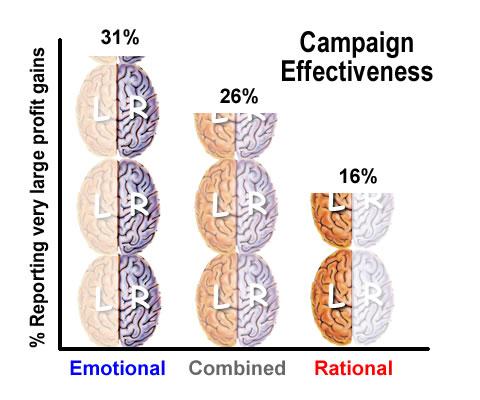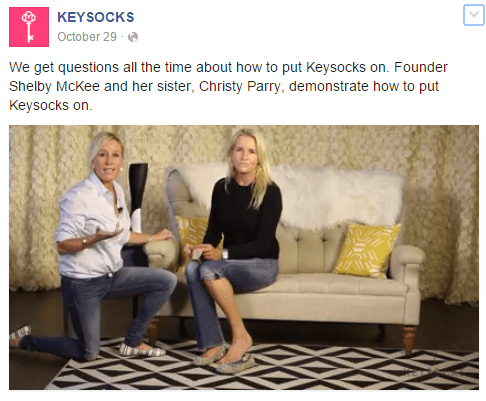Today we’re going to talk about creating a personal brand. You may be asking yourself what “personal” has to do with branding. The question makes sense, and the answer makes even more sense. Think Apple. Think Steve Jobs. Think Virgin Media. Think Richard Branson.
No matter whether you are a B2B or B2C business, at the end of the day, people (and not robots) are purchasing from you. With the average person stumbling across 5,000 advertisements and brand messages per day, it’s crucial for your brand to stand out – in a positive light. One of the best ways (if not the best) to stand out from crowd is by creating a personal brand.
Let’s get to business.
Why Personal Branding
What are the advantages of personal branding? I like to compare personal branding to being a chef. The chef has one thing that no one can take from him/her: his/her taste. Even if a recipe is copied (or someone sells an identical product), the chef can still stay ahead because their taste for foods is different from other chefs (your personality and the way you bring it to your products is different than anything the competition does).
Stimulates Emotion
First things first, being personal, can help you trigger a few emotions that must be unleashed if you want people to complete their purchases. These emotions include: belonging, trust, happiness and an overall sense of positivity.
As you can see, science has proven that emotion sells.

If you want to learn how to stimulate your visitors’ emotions (the positive ones), then check out our guide on creating emotion that improves conversion rates.
Competitive Advantage
There is only one you. Maybe the best example, when it comes to competitive advantage and personal branding, would be Apple. One of the first thing that people think of when speaking about Apple is their late iconic co-founder, Steve Jobs or perfection (which is one thing he stood for)
Yes Apple stands for great design, and innovation, but it also stands for Steve Jobs and his desire for perfection. That sense of perfection that he stood for, became part of Apple’s message to consumers, and as a result it is part of Apple’s modern day branding.
Consumers have come to expect from the company perfection, and not because Apple is a technology company (there are dozens of innovative tech companies that we don’t expect perfection from).
Staying one step of the competition is doable, and even dare I say “easy” when you have impeccable personal branding.
The How of Personal Branding
Examine Yourself
A personal brand is a reflection of who you are. Start by asking yourself a few of these questions.
- What values are most important to you?
- What’s the one thing you stand for?
- What your strengths and weaknesses?
- How do you want your company to be perceived?
Personal Branding Example: Threadlust
Threadlust founder Tiffany West was tired of redirecting blog readers to outfits that were outrageously priced. She was providing value with content, but felt that the path she was sending readers on wasn’t as high quality (the costs did not justify the products). Her move? To get personal in bringing beauty to her followers by hand picking the items that she now sells on her web store. She is a part of every product that the company sells.
“I thought, ‘why can’t there be somewhere that sells high-end trends at reasonable prices?’ So that’s what I decided to do, that is how ThreadLust – The Store was born!”
“I hand pick every item to make sure we only carry clothing and accessories I myself would wear (and I do wear them), because every girl deserves to feel beautiful and this is our small part in that!”
Match Yourself and Your Business’ Brand
A personal brand can work in any niche, but your personal brand when running an eCommerce business selling bathing suits might differ from the brand you create to sell baby clothing. You need to know who you are selling to and how you want your brand to be perceived. Your eCommerce brand must appeal to your customers. Naturally, knowing something about your customers is a must.
You want people to say that your brand is “so ____ (fun, positive, trustworthy, energetic, motivational, personal, addictive, etc)”.
Personal Branding Example: Nasty Gal
Sophia Amoruso branded her company, Nasty Gal, around her passion. That same passion that she used to launch her products, are still as relevant as ever. Sophia knew that her entire customer base could be defined by their passion for fashion (and no, not every female brand is based on that). The result is an eCommerce brand that has raised upwards of $50 million in the last two round of capital funding.
At only 30 years old, Amoruso has become one of the most prominent figures in retail and a cultural icon who has worked from the ground up and landed on top of a fashion empire named Nasty Gal— a term originally coined after a 1975 Betty Davis album and the singer’s outspoken and unapologetically sexy style. Building on that inspiration, Amoruso’s Nasty Gal first sparked a cult following in her one-woman vintage venture on eBay where she quickly learned she had a knack and photographer’s eye for fashion, styling and buying. In just five years (and after being kicked off the site in 2008), the brand has grown into a one-stop shop and online retail haven with a progressive following of fashion risk-takers and well over a hundred million dollars in revenue.
Creating a Personal Brand
Once you know what you stand for and how you want your brand to reflect that, you can work backwards. Remember this is a process, that only brings results to someone that acts on their words. Here are a few ideas on how to get personal (they’re working for others).
Create a Personal Blog
Here’s an example from Groove. They have three blogs: “Startup Journey”, “Customer Support”, and “Product”. For your own eCommerce business, if you don’t have a blog now’s the time to create a blog for your eCommerce business. Other than having a blog for your products, consider adding another blog or category about your personal journey and/or experience with your products. Give customers a view of “behind the scenes”.
Recommended: 5 Effective Ways to Increase Online Sales With a Blog
Make the “About” Page About You
About pages just don’t get much better than that of StoreYa community members, Raw Generation and Tiger Mist. To truly understand the personal touch that these brands have, it is highly recommended that you visit their sites for yourself.
Raw Generation’s Story on Vimeo
Stevie and Alana opened doors to their first Tiger Mist in August 2007 in Eltham, Victoria. In 2010 they launched their own clothing label, Rise of Dawn, named after their mum Dawn. The label quickly gathered a cult following and was picked up by over 150 boutique both within Australia and overseas.
In December 2011, the health of 23-year-old Stevie took a turn for the worst, and she was soon diagnosed with Hodgkins Lymphoma.
At the forefront of the business, Alana worked tirelessly to create a successful global business.
This was the beginning of Tiger Mist as we know it today, with currently 450k followers on Instagram and 196k Facebook likes.
Does being personal payoff? These brands are showing that personal is more than just “good”.
Use Social Media and Email to Connect
Social media and email are great channels (as you all know) to generate more revenues. These two channels are also amazing ways to interact and be yourself with your customers and leads. There is nothing people enjoy more than personal attention. You owe it to your brand and customers get personal on these two channels.

Conclusion
No business strategy is perfect or flawless. Creating a personal brand that reflects yourself, is dependent on upholding yourself to a higher standard (at all times). You are now a role model for your customers, and as they say, “with great power comes great responsibility”.
With that in mind, the benefits completely outweigh the potential downsides. As a business owner, regardless of whether or not it’s a personal brand, being a role model to customers should be part of your game plan. I hope that is clear after seeing the above examples!
As Guy Kawasaki pointed out in his presentation, “The Art of Branding” your product should speak to you as an individual, not as part of a market.
Good luck with the branding! If creating a personal brand is a goal for you, if you put in the work, you will see it become a reality. This is not rocket science. Feel free to reach out for ideas, or to leave any general thoughts, in the comment section below.

Ty is a digital marketing enthusiast that can't get enough social media marketing and content marketing. He is the inbound marketing manager at StoreYa where he spends his days searching for the newest social marketing scoop and creating amazingly awesome content. If you’d like to chat with him, feel free to connect with him on any social platform.
Recommended articles
 Facebook Ads for eCommerce: 16 Strategies, Examples & Tips
Facebook Ads for eCommerce: 16 Strategies, Examples & Tips
 How to Build a Winning eCommerce Ads Strategy
How to Build a Winning eCommerce Ads Strategy
 Google Ads for eCommerce: Everything You Need to Know
Google Ads for eCommerce: Everything You Need to Know
 10X Your Traffic with PPC Management Software
10X Your Traffic with PPC Management Software
Comments
Powered by Facebook Comments




Thanks for this post, Ty. Since having just read Amoruso’s book, it seems like her story is one of a combination of really hard work and the ‘right timing’. She manages her Twitter well by constantly engaging with users and also tweeting about things relevant to her brand.
My question is: do you think that it’s possible for a founder, CEO, etc. to establish a personal brand without devoting 100% to some type of social platform? Maybe they aren’t social media users, feel like there’s no return, or just don’t care.
Just curious to see if you think that personal branding absolutely necessitates devotion to some type of social promotion. If so, how “deep” does the founder need to go?
Thanks!
Hi Jenna,
Glad to hear you found time to read her book! Her book has a fitting title for someone that works hard :).
I do think that it is possible to create a personal brand without having to be on social 24/7. A company is built of human capital. A CEO or founder that wants to create a personal brand needs to guide all of his employees to act in that model that they want represented (no, not all employees need to act the same way. People are not robots). Through actions, a CEO can direct the mood and emotion inside the company and then have that reflected outward to the public. I do feel though that having a social presence is a wise move for those at the helm.
A CEO has enough on his/her plate, however the actions that are portrayed in and out of the company go a long way (like Steve Jobs and Richard Branson). Those two had values and made sure that their companies were built on some of those same values.